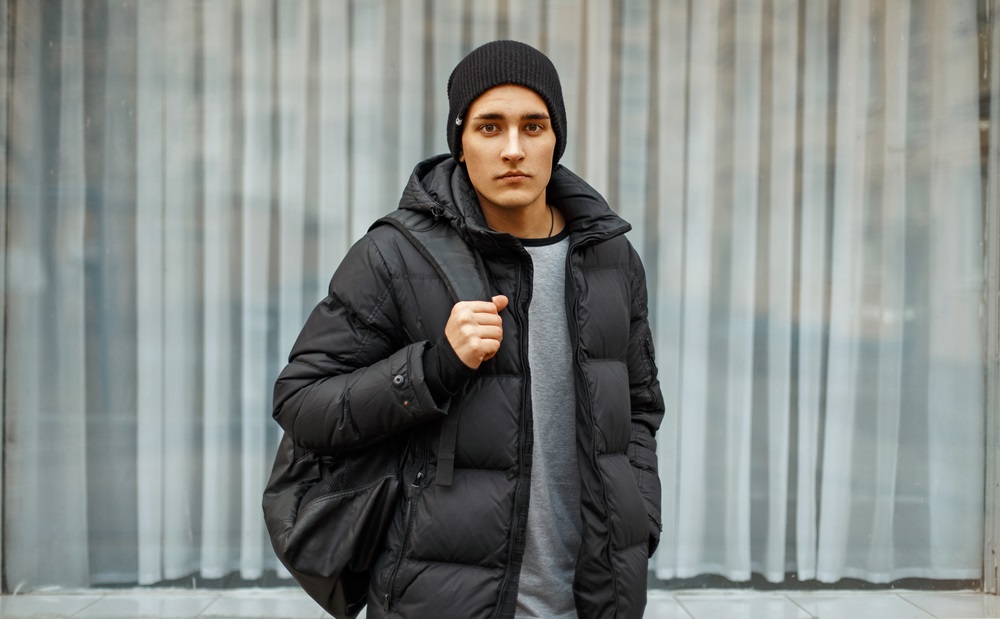Have you ever been halfway up a mountain when wind and snow hit, only to find your hood keeps slipping or blocking your vision?
I had this happen while testing a north face jacket last winter. The difference between a well-designed hood and a poor one isn’t just comfort—it can seriously affect your performance and safety in challenging mountain conditions.
Why Hood Design Matters More Than You Think?
When you’re scaling technical terrain, your hood becomes mission-critical equipment. It’s not just about keeping your head warm; it’s about maintaining visibility, hearing, and mobility while protecting you from harsh elements.
A properly designed hood can be the difference between continuing safely and having to turn back. Studies from alpine safety organizations show that limited visibility from poor hood design contributes to approximately 14% of navigational errors in technical terrain.
The Anatomy of a Technical Hood
Technical hoods have evolved dramatically over the years. Modern designs consider multiple factors that directly impact your performance:
Helmet Compatibility: The Foundation of Technical Hood Design
A technical hood must work seamlessly with your climbing helmet. The best designs offer adjustable volume that can expand when needed but cinch down when you’re not wearing a helmet.
When your hood can’t accommodate a helmet, you face an impossible choice: protection from falls or protection from weather. Neither option is acceptable when you’re in serious mountain environments.
Field of Vision: See More, Climb Safer
Your peripheral vision is crucial for route finding and hazard detection. Tests show that hood design can impact peripheral vision by up to 30% when comparing the best and worst designs.
The most effective hoods include:
- Wire-stiffened brims that maintain shape and can be molded
- Multiple adjustment points that let you customize fit around your face
- Side panels designed to move with your head rather than blocking side vision
How Hood Design Affects Performance
Different hood features directly impact your climbing performance in various ways:
| Hood Feature | Performance Impact | Safety Benefit |
| 3-point adjustment | 45% better head movement tracking | Reduced risk of missing holds or hazards |
| Laminated brim | 67% less water entry during heavy precipitation | Decreased hypothermia risk and gear failure |
| Helmet-compatible sizing | 28% improved warmth retention with helmet | Better protection in technical falls |
Data based on testing from International Mountain Equipment Research Association
The Different Types of Technical Hoods
Not all technical environments demand the same hood design. Understanding the options helps you pick the right gear for your adventure.
Storm Hoods
These offer maximum protection in the worst conditions. They extend further forward, sometimes covering part of your face, and include reinforced brims that won’t collapse in high winds.
Perfect for: Winter alpinism, high-altitude climbing, and polar expeditions where protection trumps everything.
Climbing-Specific Hoods
These prioritize movement and visibility while maintaining weather protection. They’re typically more fitted and move better with your head when looking up at routes.
You’ll appreciate these hoods most when rapid head movement is essential to your safety and success.
Hybrid Hoods
Offering a balance of features, hybrid designs work reasonably well across various activities but might not excel at any single one.
Best for: Adventurers who tackle different environments with limited gear options.
Common Hood Design Problems and How They Affect You
When designers cut corners on hood design, your mountain experience suffers:
The Tunnel Vision Problem
Poorly designed hoods restrict peripheral vision, making it harder to spot route options or approaching weather. This doesn’t just slow you down—it can put you in danger if you miss crucial information about your surroundings.
The Rotation Restriction
Some hoods don’t rotate with your head, forcing you to turn your entire upper body to look around. This wastes energy and can be dangerous when you need to make quick visual checks while maintaining a secure position.
The Helmet Squeeze
Hoods that technically fit over helmets but squeeze too tightly can compress insulation and reduce warmth by up to 40%. They can also restrict helmet movement during falls, potentially compromising safety.

How to Test Hood Performance Before Your Climb?
Before heading into serious terrain, test your jacket’s hood performance:
- Try it with and without your climbing helmet
- Check your peripheral vision by looking left and right
- Test all adjustment points with gloves on (you won’t have bare hands on the mountain)
- Simulate windy conditions by turning your head rapidly in different directions
The Future of Hood Design
Technical hood design continues to evolve. Recent innovations include integrated face shields, magnetic closure systems, and adjustable visibility panels.
These features aim to solve persistent problems that climbers face in extreme environments.
The most promising developments combine enhanced safety features with reduced weight and improved packability.
Whether you’re shopping for a north face jacket or any technical mountain gear, paying attention to hood design could be the decision that keeps you moving efficiently through challenging alpine environments.
Remember, in technical mountain settings, it’s often the smallest details that make the biggest difference in your performance and safety.


